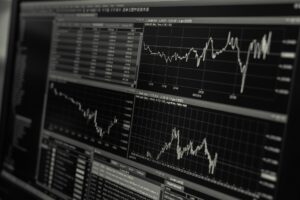Resume af teksten:
Tyske arbejdsløshedstal viste en uventet forbedring i november med et fald på 25.700, hvilket bringer det samlede tal til 2,885 millioner. Dog steg den sæsonjusterede arbejdsløshed lidt med 1.000, og holdt arbejdsløshedsprocenten uændret på 6,3%. På trods af denne forbedring har arbejdsløsheden været stigende siden maj 2022, og fremtidsudsigterne vurderes stadig som usikre. Industrien står over for strukturelle problemer, der måske vil forværre situationen yderligere. Rekrutteringsplanerne er svækkede, og antallet af ledige stillinger er nede på niveauer fra pandemiens tidlige dage. Økonomiens træghed og politisk usikkerhed påvirker også privatforbruget, som har oplevet fald, herunder et 0,3% fald i detailsalget for oktober. Samlet set peger tegnene på en fortsat langsom forværring af arbejdsmarkedet.
Fra ING:
The labour market has avoided a worst-case scenario with an improvement in November. However, a turning point is not near, at least not yet

Some early Christmas cheer for the German labour market
German unemployment dropped by 25,700, bringing the unemployment figure to 2.885 million, a surprisingly positive outcome. According to the just-released data, seasonally adjusted unemployment increased by 1,000, keeping the unemployment rate unchanged at 6.3%.
Today’s labour market numbers will bring some relief, at least in the political debate. The feared worsening of the labour market that emerged after the number of unemployed reached the symbolic three-million mark in August has so far been avoided. That said, since reaching a low of 2.2 million in May 2022, the number of unemployed has steadily increased. It’s not up by some half a million compared with then.
This trajectory reflects textbook economics: with the economy effectively stagnating for over five years and industry facing severe structural challenges, a worsening of the labour market was just a matter of time.
Improvements, yes, but far from a turning point
Looking ahead, recruitment plans in both manufacturing and services have continued to weaken, and the number of vacancies is down to levels last seen during the pandemic. Still, other indicators like social media vacancies and hiring indicators at least point to some bottoming out. At the same time, ongoing announcements of potential cost-cutting measures across the automotive and other industries, along with the continuing increase in some bankruptcies, suggest that things could get worse before they get better.
With the worsening labour market, political uncertainty about the future of Germany’s pension system, and a broader sense of sombreness in the economy, it is no surprise that private consumption has worsened again. After a brief indulgence at the turn of last year, German consumers have again closed their wallets. This morning’s news that retail sales dropped by 0.3% month-on-month in October just strengthens this point. Even more so, as real wages were still up by almost 3% on the year in the third quarter, and the savings rate has almost come down to pre-pandemic levels – a statistical conundrum.
Overall, despite today’s favourable news from the labour market, a turning point is clearly not in sight. Instead, the very gradual worsening of the German labour market is likely to continue, clearly complicating any comeback of private consumption.
Hurtige nyheder er stadig i beta-fasen, og fejl kan derfor forekomme.



